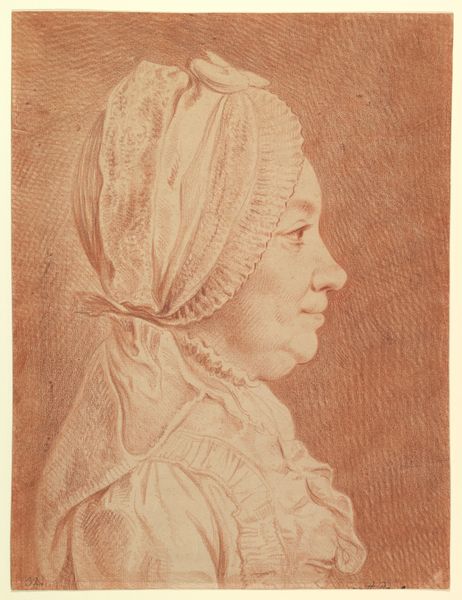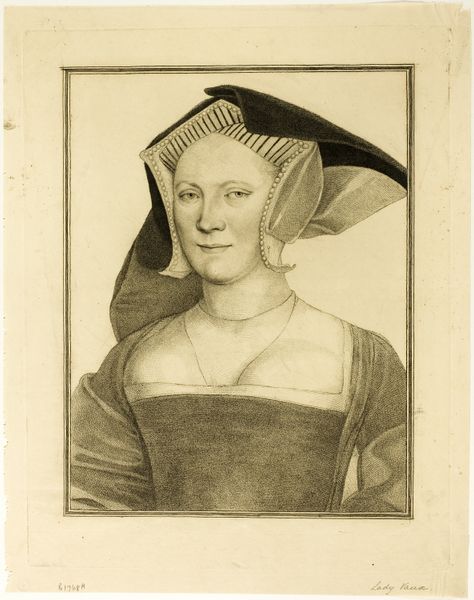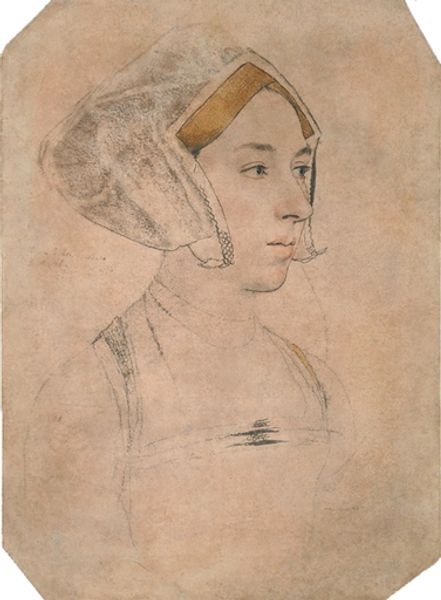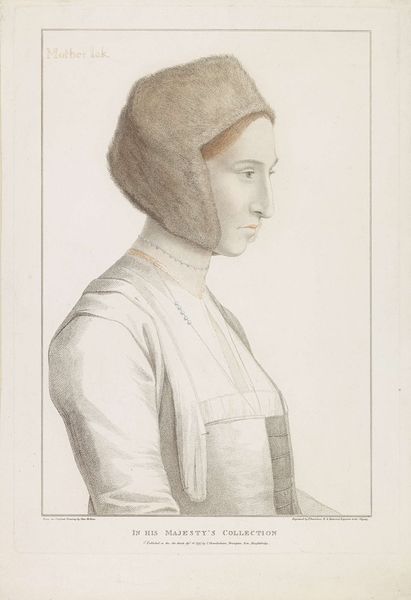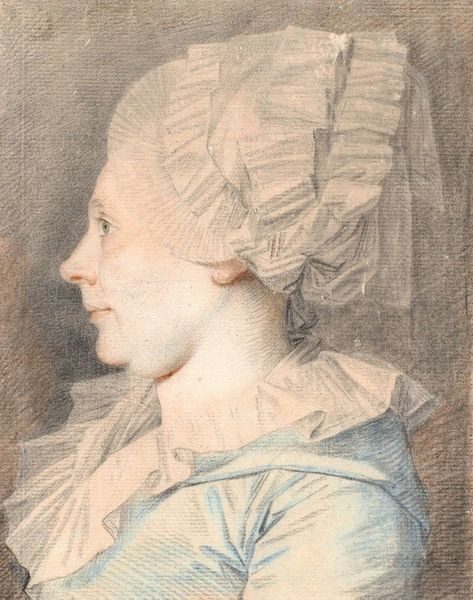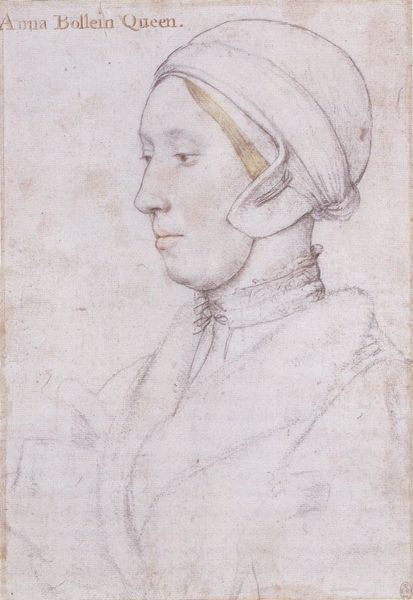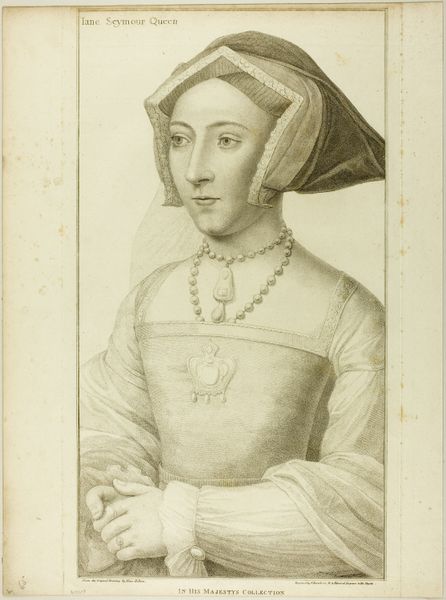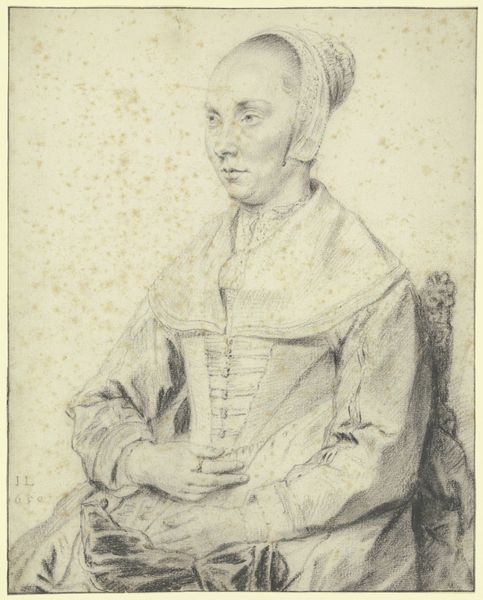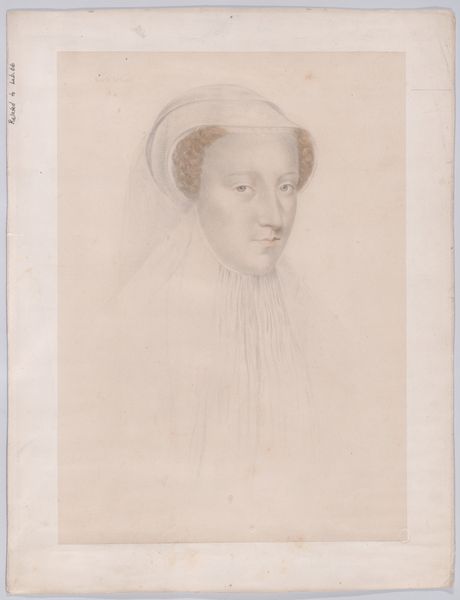
drawing, coloured-pencil, paper, dry-media, pencil, charcoal
#
portrait
#
drawing
#
coloured-pencil
#
paper
#
11_renaissance
#
dry-media
#
pencil
#
charcoal
#
northern-renaissance
Copyright: Public domain
Hans Holbein the Younger sketched this "Portrait of an Englishwoman" with chalk, pen, and ink during his time in Tudor England. As a sought-after portraitist, Holbein captured the likenesses of the English elite, producing images that were not just representations but also statements of social standing. Here, the sitter's clothing, though simple, speaks to a certain level of affluence, reflecting the rigid social hierarchies of the time. This work was commissioned, so it’s worth thinking about who this woman was, and her relationship to Holbein. Was she part of the court, or a member of the rising merchant class? Understanding the historical context of the artwork and the artist is key. By examining letters, social records, and even sumptuary laws, we can uncover the layers of meaning embedded within this portrait and appreciate its role in reflecting the social and institutional landscape of 16th-century England.
Comments
No comments
Be the first to comment and join the conversation on the ultimate creative platform.

